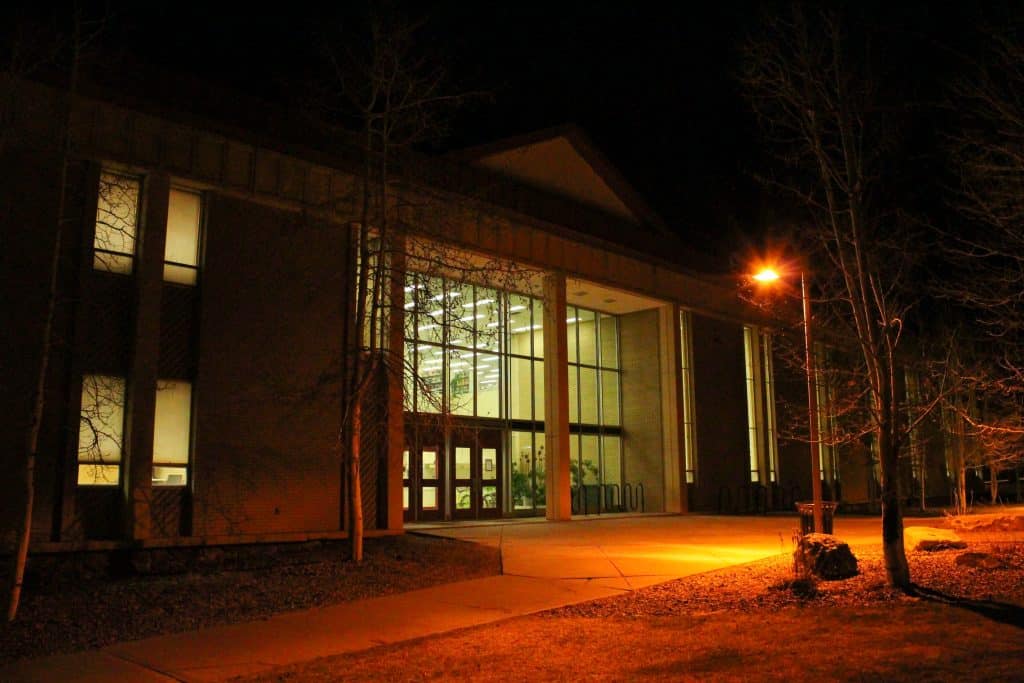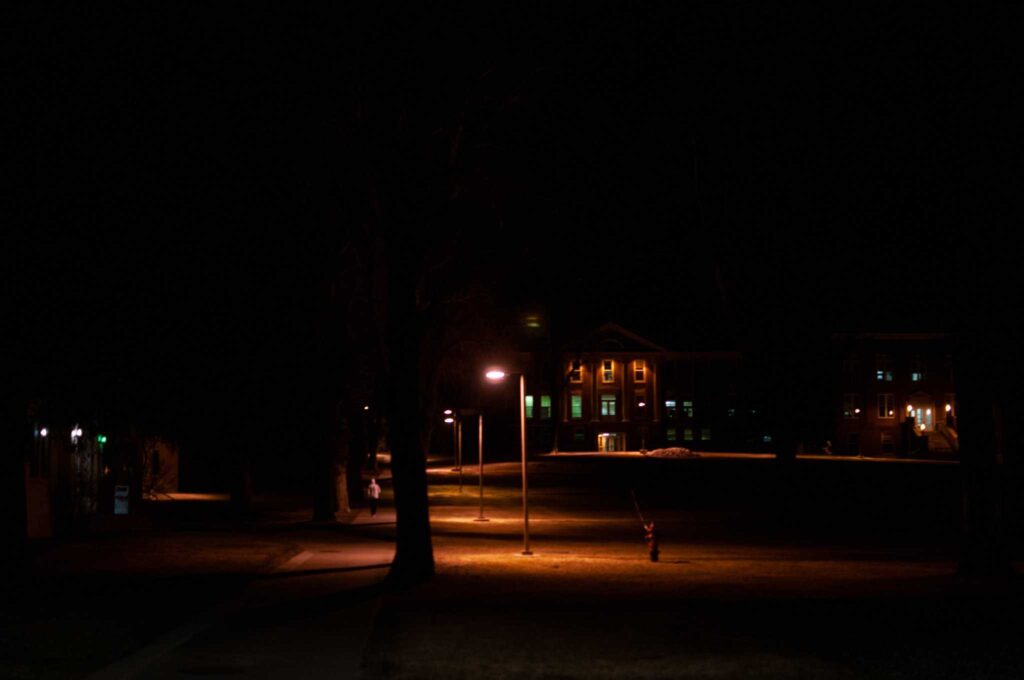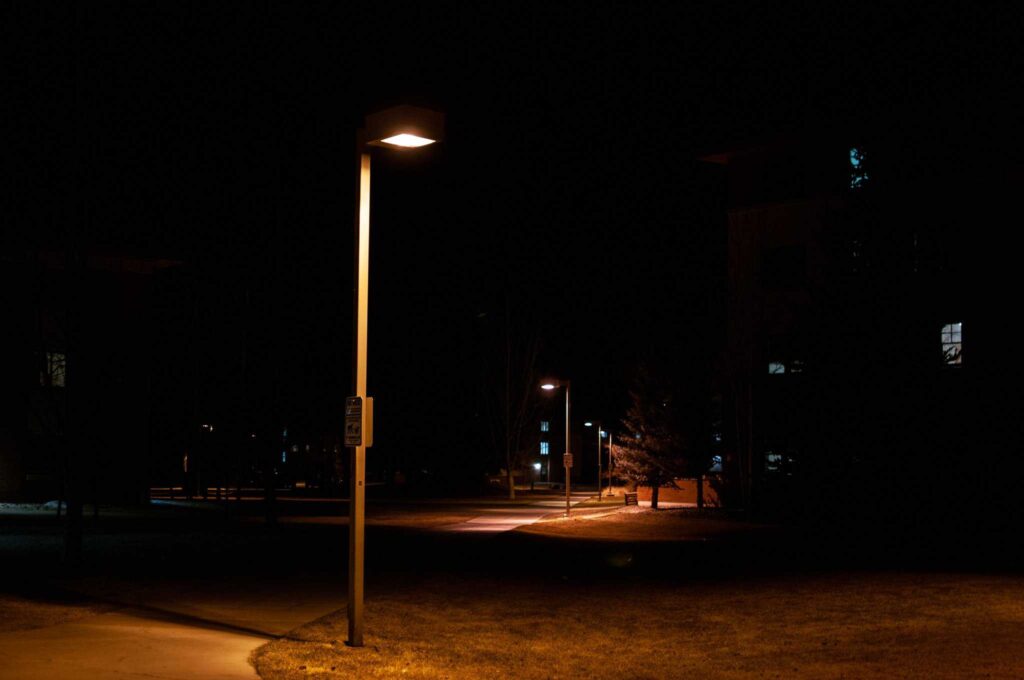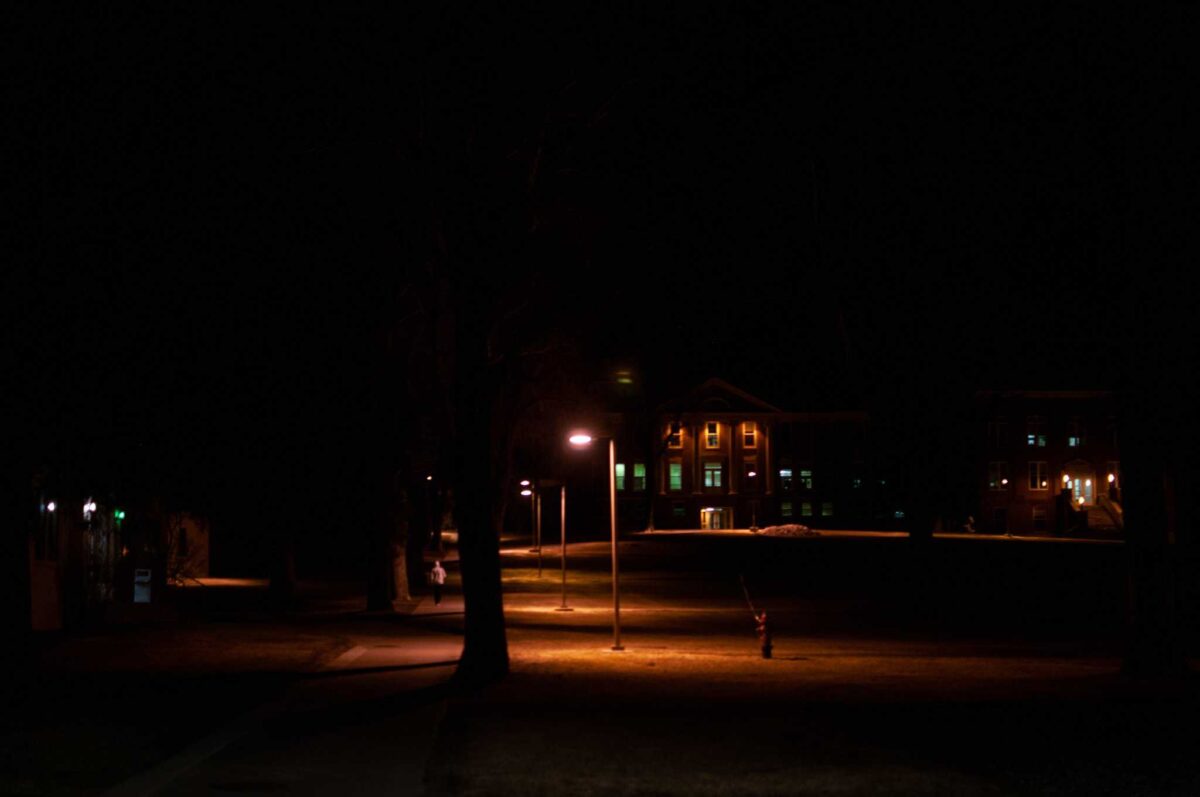
Western has wrestled with lighting and broader concerns about campus safety and property damage for a number of years, with feedback from concerned students calling for improved lighting to alleviate the risk of slip-and-fall incidents, particularly in the icy winter, and to increase the general walkability and safety of campus.
The prospective installation of cameras across campus is more divisive, owing to a variety of privacy and cost concerns, which conflict with the desire of some students, staff, and faculty to have camera recordings to potentially apprehend any offenders, or deter crime.
Student Government Association (SGA) President Adam Engleman notes that heightened calls for improved lighting and the installation of cameras came during the fall semester of 2020 into the spring of 2021, owing to a series of incidents involving vandalism and property damage, particularly during Homecoming Weekend and around Halloween.
Engleman, at that point the Vice President of External Affairs in SGA, took on a leadership role in the newly reinvigorated efforts to upgrade campus lighting and install security cameras. In the spring of 2021, several SGA members, in addition to Dean Gary Pierson, former head of campus security Nathan Kubes, and Dr. Abel Chávez, the Vice President for Student Success, conducted a campus walkthrough.

They identified a number of places around campus that could benefit from improved lighting, as well as areas where bulb replacements, or a changeover to an LED lighting system, would be optimal. President Engleman specifically identifies the newly redone library parking lot, in addition to the walking space between Crawford Hall, the Mountaineer Fieldhouse, Pinnacles and the University Center. Another area that was mentioned was the walking space on the route to the new soccer field.
With these recommendations in tow, Dr. Chávez took a proposal to the Board of Trustees, who sent a request to the state for deferred maintenance, which was recently granted. “We’re really lucky that we got this approved one year in, typically it takes three to four [years],” says Engleman.
The request, which includes roughly $2 million for lighting, will both install new lights (largely by the new soccer fields, and by the sidewalks near the freshman dormitories) and renovate existing lighting, replacing the current system with more efficient LED lights.

Engleman says that the lighting upgrades, slated to take place this summer, will comply with recognized Dark Sky protocols to minimize light pollution, reducing the impact of lighting on wildlife and on the night sky experience for humans.
Security cameras are a different animal, Engleman notes. A significant portion of Western’s faculty was not supportive of widespread cameras, and the operation and maintenance of security camera systems can pose privacy and logistical problems, legal issues, and resource challenges, particularly when discussing camera installation within campus residences.
Engleman noted that many students wanted cameras within the dorms, while a good share of students were adamantly opposed on privacy grounds. Engleman says that the decision was made to begin a trial program that focused on parking lots, particularly in lots which served residences.

He adds that a large concern amongst students in recent years was costly damage to student vehicles. Parking lots offered a less invasive venue for trialing camera systems while offering the benefit of protecting vehicles.
Every dorm and apartment parking lot will receive cameras, in addition to the University Center lot and the Mountaineer Fieldhouse lot. Engleman adds that the only two lots which may not receive cameras, depending on the project’s budgetary constraints, are the Quigley and Hurst corner lots, the streetside of the Rady Building, and the Taylor Hall Welcome Center lot.
To make the effort a reality SGA chipped in $20,000 of its own funds, dipping into its reserves. Altogether, the Campus Safety Committee raised more than $200,000 in funding to implement the camera trial program. Western’s Board of Trustees has now put out a request for proposal for the camera installation, and is awaiting the finalization of a formal bid to begin work.
Stay tuned for more coverage of campus safety.

